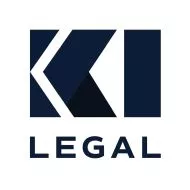Chapter 7 Bankruptcy, often referred to as "liquidation bankruptcy," is a legal process designed to help individuals and businesses eliminate most of their unsecured debts. This form of bankruptcy is particularly beneficial for those with limited income and cannot repay their debts. Unlike Chapter 13 bankruptcy, which involves a repayment plan over several years, Chapter 7 aims to discharge qualifying debts quickly, usually within a few months. The primary goal is to provide a fresh financial start for the debtor by liquidating non-exempt assets to pay off creditors.
The differences between Chapter 7 and other types of bankruptcy, such as Chapter 13, are significant. While Chapter 13 allows debtors to keep their property and repay debts over time, Chapter 7 requires the liquidation of non-exempt assets. This means that a trustee will sell certain assets and distribute the proceeds to creditors. However, many types of property are exempt from liquidation, allowing debtors to retain essential items like clothing, household goods, and in some cases, even their home and car. Understanding these distinctions is crucial for anyone considering bankruptcy as a solution to their financial woes.
Eligibility Criteria For Chapter 7 Bankruptcy
To qualify for Chapter 7 Bankruptcy, individuals must pass a means test, which assesses their income and expenses to determine eligibility. The means test compares the debtor's income to the median income of a similar household in their state. If the debtor's income is below the median, they automatically qualify for Chapter 7. If their income is above the median, they must complete additional calculations to prove that they cannot afford to repay their debts through a Chapter 13 repayment plan. This process ensures that Chapter 7 is reserved for those who genuinely need it.
Impact on Debtors and Creditors
One of the most immediate effects of filing for Chapter 7 Bankruptcy is the automatic stay, a powerful legal provision that halts most collection actions against the debtor. This includes stopping foreclosure proceedings, wage garnishments, and harassing phone calls from creditors. The automatic stay provides much-needed relief for debtors, allowing them to focus on the bankruptcy process without the constant pressure of creditor actions.
However, it's important to note that the stay is temporary and may be lifted under certain circumstances, such as if a creditor petitions the court.
Filing for Chapter 7 Bankruptcy also has a significant impact on the debtor's credit score and financial future. A bankruptcy filing remains on the debtor's credit report for up to ten years, making it challenging to obtain new credit, secure housing, or even find employment in some cases. However, the discharge of debts can provide a fresh start, allowing debtors to rebuild their financial lives. It's crucial for debtors to understand the long-term implications of bankruptcy and take proactive steps to mitigate its impact on their creditworthiness.
The content of this article is intended to provide a general guide to the subject matter. Specialist advice should be sought about your specific circumstances.


